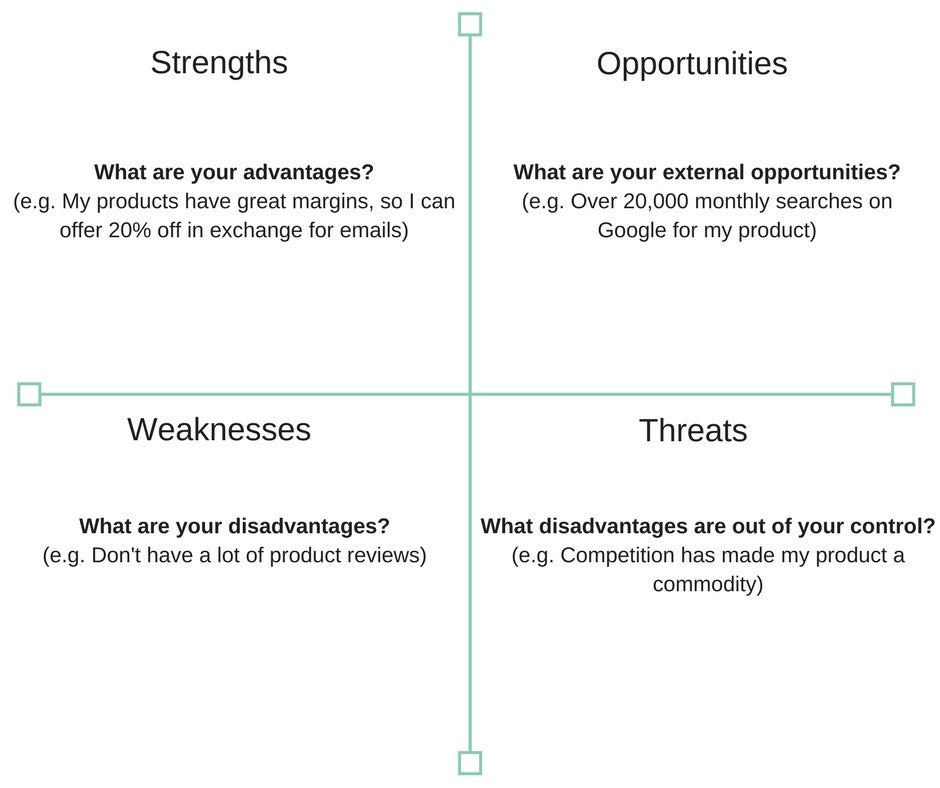A good idea—like lightning—seems to strike at random. Sometimes you spend the better part of a day looking for inspiration and never find it.
Sometimes you fill up an entire whiteboard brainstorming dozens of ideas—none of them worth doing.
And then there’s those times when your muse decides to sucker punch you in the brain with a brilliant idea as you lay in bed at night. And unless you get up and jot it down, you run the risk of forgetting it forever.
Maintaining a steady flow of good ideas is a big part of many disciplines—whether you’re an entrepreneur, a creator, a maker, or a marketer.
Creativity and the ideation process, even today, is still a bit mysterious. However, it is something you can get better at to produce good ideas reliably.
Where do ideas come from?
Before we talk about ideation, we need to look at what an idea really is.
We tend to take one of two perspectives when it comes to the origin of ideas, according to author of Eat, Pray, Love, Elizabeth Gilbert:
- Ideas come about from sheer mental effort: Through force of will and focus alone, you can come up with ideas through the process of trial and error. However, this can be frustrating as it puts the burden entirely on the thinker.
- Ideas are a spontaneous gift from forces outside of our control: Back in the day (and still today), we’d imagine a “muse”— a creative spirit floating about us—that would possess us and give the gift of a good idea. This is a more abstract take on ideation and pretty inconvenient when you think about it.
In a way, the truth is a combination of the two: Everything you absorb from the world around you is processed in your brain—”ideas” are just the relationships between those things.
You might’ve been led to believe the right hemisphere of your brain is where all ideas come from, but that’s not really the case.
Creativity actually involves different parts of your brain at different stages of the process, with the prefrontal cortex playing a big role in the spontaneous and deliberate discovery of new relationships between concepts.
Creativity is the process of connecting dots—each “dot” being an experience, a concept, or a piece of knowledge you’ve collected.
This is a recurring theme across many stories of invention and discovery.
The idea for Velcro was born when George de Mestral, a Swiss engineer, was hiking in the mountains and noticed cockle-burs stuck to his pants and his dog's fur. He connected the dots between the cockle-bur's hook and loop design and the real world applications they could have in fastening objects together, which is now used in shoes and even by NASA.
You're also probably familiar with the story of how Sir Isaac Newton allegedly defined gravity after observing an apple falling from a tree and connecting that to his existing knowledge of physics and math.
One of the beautiful things about ideation is how we draw upon what already exists to generate something different, simply by looking at existing concepts together in a new way.
Hats and cats, separately, are perfectly unassuming concepts. But combine the two and you end up with a pretty novel idea that people search for over 14,000 times a month on Google ("hats for cats"), and a seemingly silly concept becomes a potential low investment business idea 😉 .

Most great stories about ideas seem to have them come out of the blue. But people who have to be creative every day to make ends meet are living proof that it's possible to do it on demand.

Free Guide: How to Find a Profitable Product to Sell Online
Excited about starting a business, but not sure where to start? This free, comprehensive guide will teach you how to find great, newly trending products with high sales potential.
Get How To Find A Product To Sell Online: The Definitive Guide PDF delivered right to your inbox.
Almost there: please enter your email below to gain instant access.
We'll also send you updates on new educational guides and success stories from the Shopify newsletter. We hate SPAM and promise to keep your email address safe.
The four stages of intentional ideation
The creative process is perhaps best understood through the model outlined by Graham Wallis that’s broken into four stages:
- Preparation: Outlining the problem and requirements, and gathering information.
- Incubation: Giving your mind time to digest and work through different combinations between everything you've amassed in the preparation stage.
- Illumination: The "aha!💡" moment when you come up with the beginnings of a working idea.
- Verification: Validating your idea by seeing if it meets all the requirements you set in the preparation stage.
If an idea doesn't pass the verification stage, you simply return to the incubation or preparation stages and try again.
Anyone who engages in creative problem solving on a regular basis is likely already going through this process intuitively.
But by developing an awareness of these stages, and applying tactics to help you along at each step, you become more efficient at it and can produce better ideas more reliably.
1. Preparation: Equipping yourself with information
The more information you have, the more possibilities there are.
This stage is all about knowing what cards you're holding and the rules of the game you're playing.
Ultimately, you'll need a firm grasp of your objective. Are you trying to come up with a catchy slogan? Are you trying to make a certain amount of extra cash?
This is also where you set your restraints for the verification stage: How big is your budget? What is your time limit? Who is the audience for the idea?
Make your problem as concrete as possible so you can start working backwards from there. (e.g. "I want to make $1,000 so I can go on a nice vacation in two months." or "I want to reach 10,000 new cat owners with a holiday marketing campaign").
If you're tackling a problem for a business you're involved in or want to start, a SWOT analysis can help you lay all your cards out on the table and consider potential internal and external obstacles and advantages.

Research is also a key part of this stage. And all good research starts by asking questions that will help you fill in missing information.
Write these queries out to guide your research and make the internet your ally:
- Use Google search to learn more about your problem and related topics
- Use Google Trends to identify hot topics and trends
- Use Reddit to get answers to your questions and eavesdrop on discussions that might reveal useful information
- Ask questions or find answers on Quora
- Look for existing solutions to your problem and how those ideas were executed
In theory, this process can go on forever, so try to push forward to the next step as soon as you can.
The creative process is messy and you'll likely revisit this stage if you don't turn up any good ideas.
2. Incubation: Connecting the dots until a picture forms
"I’m not procrastinating—my idea is just incubating."
It sounds like an excuse to do nothing, but it’s the very reason why sometimes when you walk away from a problem, you suddenly come up with a solution.
In the incubation stage, we step back from the problem and everything we've accumulated in the preparation stage to give our minds a chance to connect the dots.
Recognize that incubation happens both passively and actively. Don't feel bad about taking a break or doing something else if you're not turning up anything good (this can actually bring about the next stage, as you'll soon find out).
However, you can and should warm up your creative muscles in some of the following ways:
- Free writing: Write about your problem. Just get every thought and idea down without worrying about grammar or spelling or whether it makes sense. Not only is this a good warm-up, our brains are good at spotting patterns, and so we might find something useful in the mess of words.
- Drawing a mind map: Write your problem in the middle of a whiteboard or on a piece of paper, then start clustering concepts together by literally draw lines where connections can be made. Use a piece of paper or a free tool like Coggle.
- Making a list and outlining your thought process: Using Workflowy (free), a piece of paper or a Google Doc, create a high level outline through bullet points of a potential solution, grouping them into groups and subgroups an so forth.
- Making a venn diagram: Draw two or more overlapping circles to create a venn diagram you can use to express differences in each circle and commonalities in the middle where they overlap. This is especially helpful for creating analogies and thinking up creative ways to explain something.
- Bouncing ideas off someone else: Two heads are better than one. Expose your problem solving process to someone you trust and apply the age old rule of improv, "Yes, and..." to pursue each train of thought as far as it goes instead of rejecting any of them too soon.
A large quantity of ideas are far more important at this stage than quality. There are no "bad ideas" at this point. You never know what connections will inspire something you can use, and at the very least this will prepare your mind for the next stage.
3. Illumination: Capturing the ideas that excite you
When it rains, it pours—especially during a brainstorm.
This is the eureka! moment. This is the part we all look forward to. This is when an idea is born in a flash of inspiration.
For inventors and entrepreneurs, these moments of illumination can sometimes become the basis for a good founding story.
It comes as a flood of insight, often when you least expect it. There's a reason for that. The brain is actually more prone to these flashes when your frontal lobe isn't fully engaged. Doing chores or other tasks where you can check out mentally can be a good way to distract yourself from the problem at hand and let it stew in your head until inspiration hits.
When it happens, though, capture as much of this insight as your mind can "see" while it's still firing on all cylinders. These moments are fleeting, so it's best to capitalize on them, following the trail of inspiration as far it goes.
Many entrepreneurs and career creators keep an idea journal of some kind handy for these moments. Usually it's a small book or a dedicated app—Evernote, Trello, Google Keep (what I use)—but it should be something you can keep on you at all times.

Free Reading List: Ecommerce Motivation
Having trouble focusing on growing your small business? Get access to our free, curated list of high-impact productivity articles.
Get our Ecommerce Motivation reading list delivered right to your inbox.
Almost there: please enter your email below to gain instant access.
We'll also send you updates on new educational guides and success stories from the Shopify newsletter. We hate SPAM and promise to keep your email address safe.
4. Verification: Evaluating and tweaking your idea
Poke holes in your idea and see if it still floats.
This is the last stage where you check to see if the ideas you came up with actually meet your requirements.
Don't just aim to be objective here—actively play the role of devil's advocate and ask the hard questions. Be fine with killing your ideas if they don't fit your requirements or you can't adapt them to make them work.
At this point, it's also important to see how your potential idea has already been done. Truly original ideas are incredibly rare, but that's not necessarily a bad thing.
By looking at how similar ideas have already been executed, you can see where you need to reinvent the wheel and where you don't, borrowing whatever works and improving upon it wherever you see opportunities. This is common in marketing where new ideas are inspired by competitors or even companies in different industries.
If a lack of certainty scares you away from an idea because it's too "out there" and outlandish, just remember Seth Godin's words:
“In a crowded marketplace, fitting in is failing. In a busy marketplace, not standing out is the same as being invisible.”
If your primary goal has anything to do with capturing and keeping people's attention, different can be good as long as it aligns with your audience.
Embracing random and planned creativity
As much as we try, we won't always be able to turn on our creativity like a faucet whenever we need it. You can try to beat procrastination or find hacks to focus better, but there will always be times when you can't control your creative process.
Despite many claims about "the most creative times of day", there's actually a lot of variance in when famous creatives did their work.
The only real commonality is that creative people tend to rely on a routines to increase their creative output.

Whether you’re a night owl or a morning person, consider making the most of your most inspired hours to make creativity a habit.
Instead of trying to copy every successful person's routine, learn to lean into your own.
Creativity is more like a muscle than a wishing well.
It's not something you run out of. It's something you feed and exercise, and push beyond its limits, so it gets stronger every time. Leave it alone and it atrophies and grows weak.
It all contributes to a stronger creative process. The more you consume in the world around you and the more often you connect it in clever ways, the better you get at it.
So read and learn about a bit of everything and find creative ways to "play": whether it's writing, drawing, freestyle rapping or anything that encourages you to combine concepts in novel ways.
Getting lightning to strike twice
While natural creative geniuses surely exist, anyone can be creative and become more creative by integrating ideation and the creative process into their lifestyle.
If creativity was a truly unreliable force, there would be no career artists or writers or comedians or YouTubers or serial entrepreneurs. These people have integrated the creative process into their very lifestyles—living, breathing, and embracing the ideation process every day—able to make lightning strike twice, thrice, and many more times when they need it and even when they don't.
However, the start of an idea alone isn't worth much. Nor does the creative process end when you start executing. You continue to connect the dots as you flesh out an idea and bring it to life. And that's where the real fun begins.

